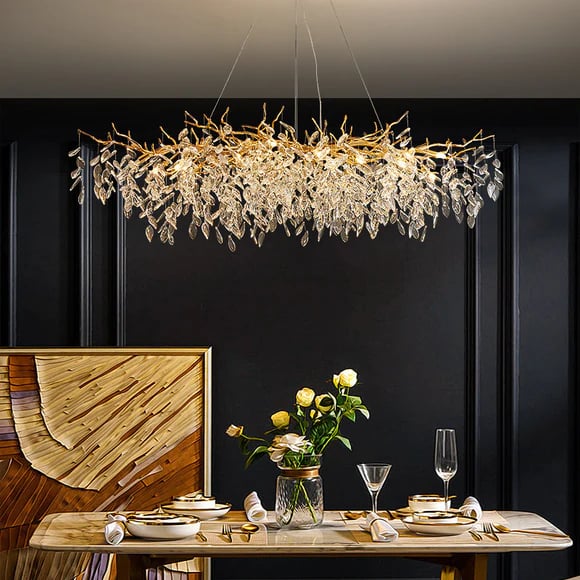LIGHTING A CRUCIAL ELEMENT IN HOME INTERIORS
Lighting is no longer the last consideration, it is crucial and how?!
Sakina Baxa
6/5/20242 min read


The Crucial Role of Lighting in Interior Design
Lighting is often an overlooked aspect of interior design, yet it plays a pivotal role in creating ambiance, enhancing aesthetics, and ensuring functionality. Proper lighting can transform a space, making it feel inviting, spacious, and comfortable. This blog explores the importance of lighting in interior design and how to effectively incorporate it into your home.
1. Setting the Mood
A. Ambiance Creation
• Warm vs. Cool Lighting: Warm lighting creates a cozy and intimate atmosphere, perfect for living rooms and bedrooms. Cool lighting is more energetic and is ideal for workspaces and kitchens.
• Dimmer Switches: Installing dimmer switches allows you to adjust the brightness, giving you control over the mood and functionality of a room.
B. Highlighting Features
• Accent Lighting: Use accent lights to highlight architectural features, artwork, or focal points in a room. This adds depth and visual interest.
• Layered Lighting: Combining different lighting types (ambient, task, and accent) creates a layered effect, enhancing the room’s ambiance.
2. Enhancing Aesthetics
A. Decorative Elements
• Statement Fixtures: Chandeliers, pendant lights, and unique lamps can serve as focal points and add a touch of elegance or whimsy to your decor.
• Style Cohesion: Choose lighting fixtures that complement your interior style, whether it’s modern, rustic, or traditional, to create a cohesive look.
B. Color and Texture
• Light Reflection: Light can accentuate colors and textures in your decor, bringing them to life. For instance, a well-placed light can make a textured wall or patterned fabric pop.
• Highlighting Details: Use lighting to highlight detailed elements like crown moldings, wainscoting, or unique architectural features.
3. Functional Importance
A. Task Lighting
• Workspaces: Task lighting is crucial in areas where specific activities are performed, such as reading, cooking, or working. Desk lamps, under-cabinet lights, and vanity lights are common examples.
• Directional Lighting: Adjustable or directional lights ensure that the task areas are well-lit without causing glare or shadows.
B. Safety and Accessibility
• Stairways and Hallways: Proper lighting in these areas prevents accidents and ensures safe movement throughout the house.
• Entry Points: Well-lit entryways enhance security and make it easier to navigate your home.
4. Influencing Perception of Space
A. Size and Scale
• Illusion of Space: Bright, well-lit rooms appear larger and more open. Strategically placed lighting can create the illusion of more space.
• Ceiling Height: Uplighting or wall sconces can make ceilings appear higher, adding to the feeling of spaciousness.
B. Room Functionality
• Multi-Use Spaces: Proper lighting can delineate different areas within a single room, making it more functional. For example, a living room can have a well-lit reading nook and a dimly lit relaxation area.
5. Energy Efficiency and Sustainability
A. LED Lighting
• Energy Saving: LED lights consume less energy and have a longer lifespan than traditional incandescent bulbs, making them an eco-friendly choice.
• Versatility: LEDs are available in various color temperatures and styles, suitable for all types of lighting needs.
B. Smart Lighting
• Automation: Smart lighting systems allow you to control lighting remotely, schedule lighting changes, and even adjust the color temperature based on the time of day.
• Energy Management: These systems help reduce energy consumption by ensuring lights are only on when needed.
Conclusion
Lighting is a fundamental element of interior design that impacts mood, aesthetics, functionality, and energy efficiency. Thoughtfully planned lighting not only enhances the beauty of your space but also improves its usability and comfort. By considering the different types of lighting and their roles, you can create a well-lit, inviting, and functional home that caters to your lifestyle needs. Whether you’re renovating or just looking to refresh a room, don’t underestimate the power of good lighting.


